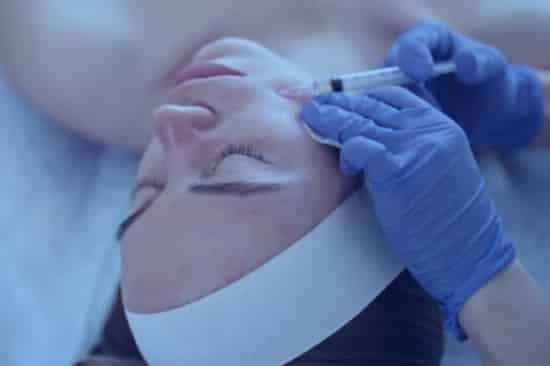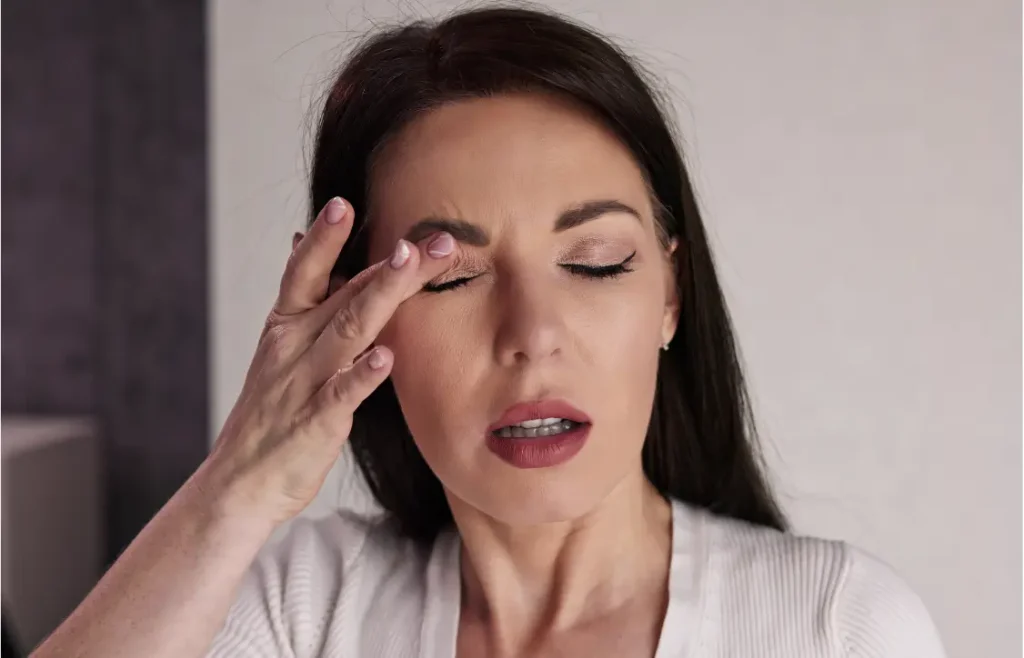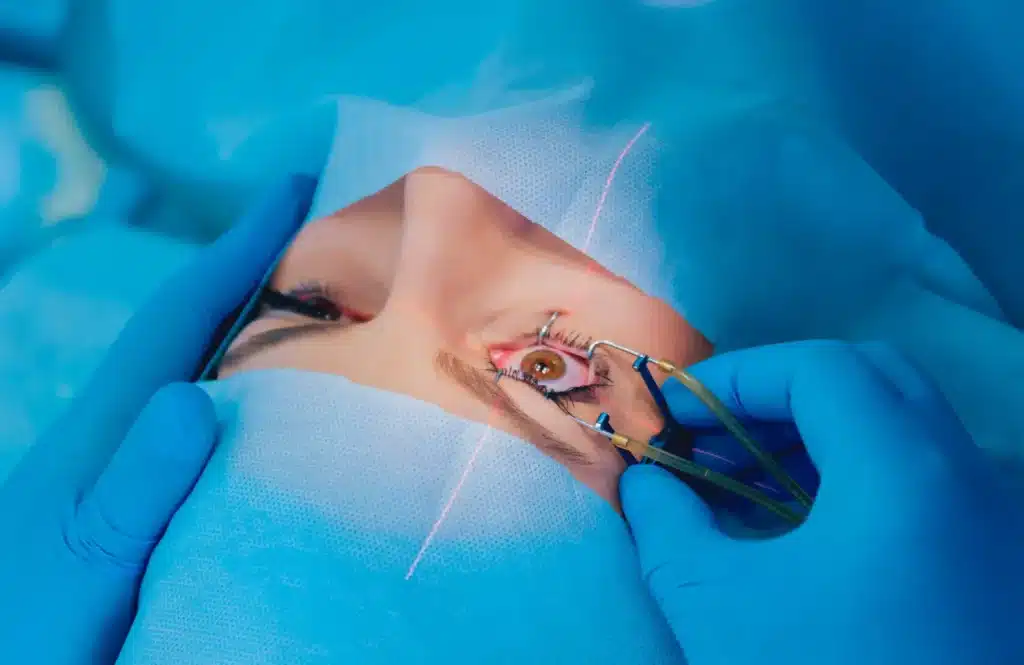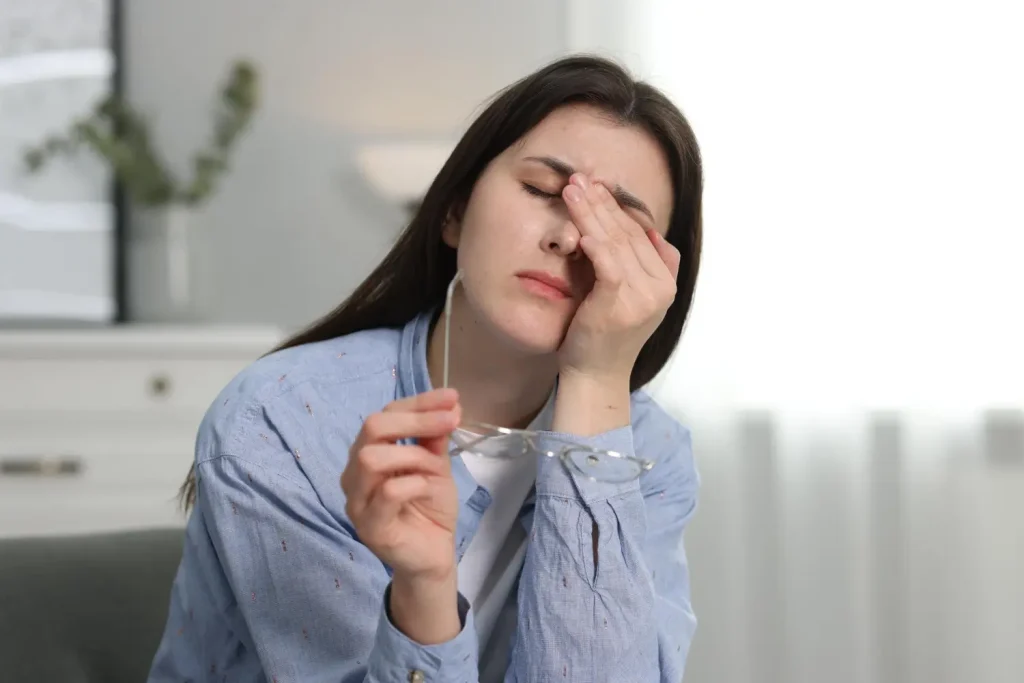Cheap, accessible, and highly effective aesthetic procedures are in high demand among patients who do not want to take the risk of surgical interventions. Such procedures predominantly involve the use of dermal or soft tissue fillers that can provide a number of corrections. To this point, patients resort to these treatments for anti-aging solutions, such as wrinkle elimination or volume augmentation.
Since these fillers are temporary, patients want solutions that are long-lasting yet also cost effective. As a result, manufacturers have responded by creating fillers that are longer-lasting, if not permanent. Unfortunately, some of these fillers can impose risks that many patients and practitioners are not aware of. To be a professional aesthetic injector, it is always beneficial to keep the complications that can occur from the treatment in mind. The injector must also take responsibility for educating the patient on suitable treatments and how to deal with treatment complications.
Permanent vs temporary fillers
It is safer to assume that all filler materials have associated risks and complications with their use. These complications can arise from the product’s incompatibility with the individual, the construction of the material, or the administration procedure(s). Various tests and assessments, or even clinical trials, must be undertaken to ascertain a safety and efficacy profile.
Most of the confusion with choosing fillers come from the ignorance of patients in respect to dermal fillers. It is common to have patients who do not grasp the difference between temporary and permanent fillers to only seek for the latter. The difference between the two lies in their respective resorption properties. For temporary fillers, the materials can be broken down and resorbed in the body, as most of these fillers’ materials are similar to natural content in the body. Permanent fillers, however, are composed of materials that are not easily dissolved in the body and are identified as foreign particles by the body itself.
With the high demand for longer-lasting fillers, manufacturers have employed cross-linking technologies as a means to prolong fillers’ durability. With a longer resorption delay, the filler appears to be “permanent” in nature.
Dermal fillers and complications
It is common for injectables to have predictable minor or mild complications that are transient, such as erythema or redness, swelling, ecchymosis, pain from the injection puncture, visible but mild nodules, and palpability. Non-permanent fillers with hyaluronic acid (HA) may have a hydroscopic effect. These complications can be a result of various procedural missteps, such as under-correction or overcorrection, superficial or incorrect placement of the implant, bacterial infection, and accidental vascular compromise.
Most of these complications should not happen if the proper technique(s)e is employed. The injector must also know proper anatomical and material knowledge and conduct a consultation session before proceeding with an injection procedure. If these complications occur because of the use of an HA-based filler, many of these complications can be alleviated directly through the use of hyaluronidase, an enzyme that is able to reverse the effects of HA-based fillers and remove such fillers themselves because of its ability to degrade HA. However, for permanent fillers, these complications may be more intense and have a higher probability of being permanent.
Included below are some examples of common complications that can occur from a dermal filler treatment. Do note that these complications can become more severe if it is a permanent filler that has been implanted; such complications may require surgical removal.
Early onset complications: These are the common complications that occur with HA fillers, bovine fillers, and collagen fillers. Non-inflammatory nodules may appear at the injection site due to overcorrection or the accumulation of filler materials. The nodules or swelling can be reduced with a gentle post-injection massage that evenly distributes the product in the skin. If these nodules persist and are caused by the use of an HA filler, hyaluronidase can be used. For other materials, incision stabbing can be considered if necessary. Unfortunately, the use of hyaluronidase is not applicable for non-HA-based fillers and permanent fillers.
Delayed onset complications: These complications are a result of heightened cellular responses to the implant. Such complications include telangiectasia (spider veins, or superficial dilated blood vessels), persistent erythema (redness), granulomas, inflammatory nodules, and abscesses. For treatment, these complications may require the use of 532nm or 1064nm lasers and/or the use of tetracycline or macrolides antibiotics for four to six weeks. If there are no improvements after one or two weeks, patients should consider using intralesional corticosteroids. Tissue biopsy may be considered if these options show no improvements.
Acute infections: Infections can occur due to the cellular activity of foreign bodies found on the skin or mycobacterium. This sort of activity can occur when aseptic techniques are underutilized. In some cases, a reaction from the herpes virus can occur. Treat the infection with macrolides or tetracycline. For permanent fillers, both acute and chronic infections can be a lifetime threat, as there is no guarantee of complete removal of the material causing such infections.
Early inflammatory nodules: Painful and tender redness usually appear after a dermal filler injection. However, infections and foreign body granulomas can cause the formation of inflammatory nodules that are much more serious as a medical condition than the symptoms described in the first sentence. Such inflammatory nodules are seen as an infection and should be treated empirically with tetracycline or macrolides. If there is a risk of skin erosion, perform an incision and drain the nodule. Patients should undertake antibiotic treatment for at least four to six weeks. If there is no sign of improvement, consider the usage of intralesional corticosteroids.
Granulomas: One of the common effects of a dermal filler is the late emergence of granulomas and sterile abscesses. These can occur even within 10 years after the injection of both temporary and permanent fillers.
Direct arterial embolization: Accidental contact with blood vessels and embolization of the filler material can cause tissue necrosis. Direct arterial embolization can be painful and can cause skin blanching. The vulnerable branches are the labial artery, glabellar supratrochlear arterial branches, nasal dorsal artery, and the angular vessels near the nasolabial folds.
Vascular compromise: To reduce the risk of vascular compromise, use small needle sizes, such as those that are 3032G, and administer filler material as you withdraw the needle. Immediately treat an area that is afflicted by vascular compromise by stopping the injection and attempting aspiration. Other methods include massaging the affected area to distribute the filler evenly, using warm compresses, and elevating the local vasodilatation using 2% nitroglycerin paste. If HA-based fillers are causing vascular compromise, use hyaluronidase to dissolve it. Vascular compromise used to be a common occurrence in the glabellar area when it was treated with a filler consisting of glutaraldehyde cross-linked bovine collagen. Currently, the use of this filler has been constrained.
Compromise of the venous circulation: Large filler volumes may compress the treated area, which can result in the creation of constant swelling and a dull aching sensation. Patients may observe a patchy discoloration of the skin. Practitioners need to be fully knowledgeable about the anatomy of the face, especially in respect to the angular vessels near the nasolabial folds, to avoid affecting any vulnerable structures and reduce the risk of this complication occurring.
Chronic pain: With tear trough treatments, there is a risk of chronic pain developing at the zygomaticofacial and infraorbital nerve territories. Due to the high sensitivity of these sites, it is recommended that a temporary filler is used instead of a permanent filler because resolving any issues with the former is considerably easier than doing so with the latter.
Biofilms: Biofilms are a group of microorganisms that accumulate together and act as dormant bacterial infections; biofilms usually originate from the initial injection of a filler treatment. The establishment of a microorganism community tends to adhere to an inert structure. They form a self-encapsulating polymer matrix that shields them from phagocytes and maintains a low growth and metabolism rate. These microorganisms can also form a strong resistance from antibiotics. There is a risk of biofilms developing with the use of permanent fillers.
Removal of permanent fillers
With temporary fillers, there are various ways to reduce or rectify complications. For permanent fillers, however, surgical intervention is often the only way to remove problematic filler loads. Even with this method, a complete removal of all particles may not be achievable. Surgical intervention may also increase the risk of introducing other infectious organisms.
Many manufacturers have claimed that their permanent fillers are easy to remove, as they should be distributed in the body as discrete and localized encapsulated accumulation. Unfortunately, studies have shown otherwise. Indeed, studies have shown that these fillers tend to migrate to other parts of the body and are widely distributed in the body as detached capsules. These tendencies of permanent fillers make their removal fillers more difficult, as they may conform to vulnerable structures and cause more widespread circulation of chronic infection. Prominent and permanent defects and scarring have occurred in cases of permanent filler application.
To remove permanent fillers, especially from complex facial regions, it is important for practitioners to be well-versed in the anatomical nuances of the craniofacial region. For assessment and monitoring, the use of preoperative radiological MR imaging with a high contrast medium can help practitioners navigate through the complex anatomical site. For example, the contrast medium can be inserted into the patient to enhance the visibility of tissues and the encapsulation of the filler.
Another way to plan out the removal course is with the assistance of an ultrasonography. This can map out the exact point for incisions and needle penetrations into the filler. This can help determine the appropriate removal process for the site, surgical needle approaches, and/or incision approaches. It is also important to note that each region may demand different techniques, such as the following:
- Rhytidectomy approach for the lateral cheek element;
- Midface approach via the lower eyelid;
- Bicoronal approach for the upper-face;
- Open rhinoplasty approach.
When a discussion with a specialist comes to open-needle approaches, an ultrasound-assistance process can be performed prior to the treatment, giving a more accurate interpretation of the areas relevant to the treatment. Any introduction of air into open needle approaches can interrupt the reading. These two techniques combined will cause an even greater increase in the confirmation that filler material elimination has occurred.
Conclusion
To avoid complications of permanent dermal fillers, one must be competent and have extensive training in using such fillers. Additionally, a very thorough knowledge of the relevant anatomical region can lower the risk of these complications. Since permanent dermal fillers are prone to permanent complications, injectors must also be aware of the monetary cost of surgical intervention. Many patients are unaware of the risks that can occur with such fillers; thus, it is also advisable to educate them on the possibilities of such complications occurring and the potentially massive costs of the surgical treatments to rectify or ameliorate them. It has been suggested that there are a significant number of permanent filler-related complications that have been unrecorded thus far.
References
- Lim LM, Dang JM, et al. ‘Dermal Filler Devices Executive Summary,’ FDA, (2018) http://www.fda.gov/ohrms/dockets/ ac/08/briefing/2008-4391b1-01%20-%20fda%20executive%20 summary%20dermal%20fillers.pdf
- Nadarajah JT, Collins M, Raboud J, Su D, et al., (2012) ‘Infectious Complications of Bio-Alcamid Filler Used for HIV-related Facial Lipoatrophy’, Clin Infect Dis; 55(11): pp.1568-74.
- Salati SA & Al Aithan B, (2012)‘Complications of Dermal Fillers An Experience from Middle East’, Journal of Pakistan Association of Dermatologists,; pp.22:12-18
- Sclafani AP & Fagien S, (2009) ‘Treatment of Injectable Soft Tissue Filler Complications’, Dermatol Surg; 35: pp.1672-1680.
- Bray D, Hopkins C, & Roberts DN, (2010)‘A review of dermal fillers in facial plastic surgery Current Opinion in Otolaryngology & Head and Neck Surgery’, 18,pp.295302.
- Sung MS, Kim HG, Woo KI, Kim YD. (2010) ‘Ocular ischemia and ischemic oculomotor nerve palsy after vascular embolization of injectable calcium hydroxylapatite filler.’ Ophthalmology Plastic Reconstruction Surgery, 26, 289e91.
- Kim YJ, Choi KS, (2013) ‘Bilateral blindness after filler injection’, Plast Reconstr Surg, 131.
- Lazzeri D, Agostini T, Figus M, Nardi M, Pantaloni M, Lazzeri S, (2012)‘Blindness following cosmetic injections of the face’, Plastic Reconstruction Surgery, 129.
- Cavallini M, Gazzola R, Metalla M, Vaienti L, (2013) ‘The Role of Hyaluronidase in the Treatment of Complications from Hyaluronic Acid Dermal Fillers’ Aesthetic Surgery Journal, 33(8) 1167-1174. https://doi.org/10.1177/1090820X13511970
- Funt, D., & Pavicic, T. (2013). Dermal fillers in aesthetics: an overview of adverse events and treatment approaches. Clinical, Cosmetic and Investigational Dermatology, 6, 295316. http://doi.org/10.2147/CCID.S50546
- Beer, K., Downie, J., & Beer, J. (2012). A Treatment Protocol for Vascular Occlusion from Particulate Soft Tissue Augmentation. The Journal of Clinical and Aesthetic Dermatology, 5(5), 4447.
- Wu H, Moser C, Wang H, Høiby N & Song Z, ‘Strategies for combating bacterial biofilm infections International Journal of Oral Science’, 7(2014) pp.17.
- Abdelmohsen K., Aboueldahab, Galal AMR, (2015) ‘Management of Permanent Facial Fillers Complications Using Radiological Assessment as a Guide for Surgical Removal’, Egypt Journal of Plastic Reconstruction Surgery, 39(2), 249-258. http://www.esprs.org/Content/Journals/ManagementofPermanent.pdf
- Schelke LW, Van Den Elzen HJ, Erkamp PP, Neumann HA. Use of ultrasound to provide overall information on facial fillers and surrounding tissue. Dermatol Surg. 2010;36(suppl 3):1843-1851.
- Kirkpatrick N., Foroglou P., (2016) ‘Treating Permanent Dermal Filler Complications’, Aesthetics Journal. https://aestheticsjournal.com/feature/treating-permanent-dermal-filler-complications



















